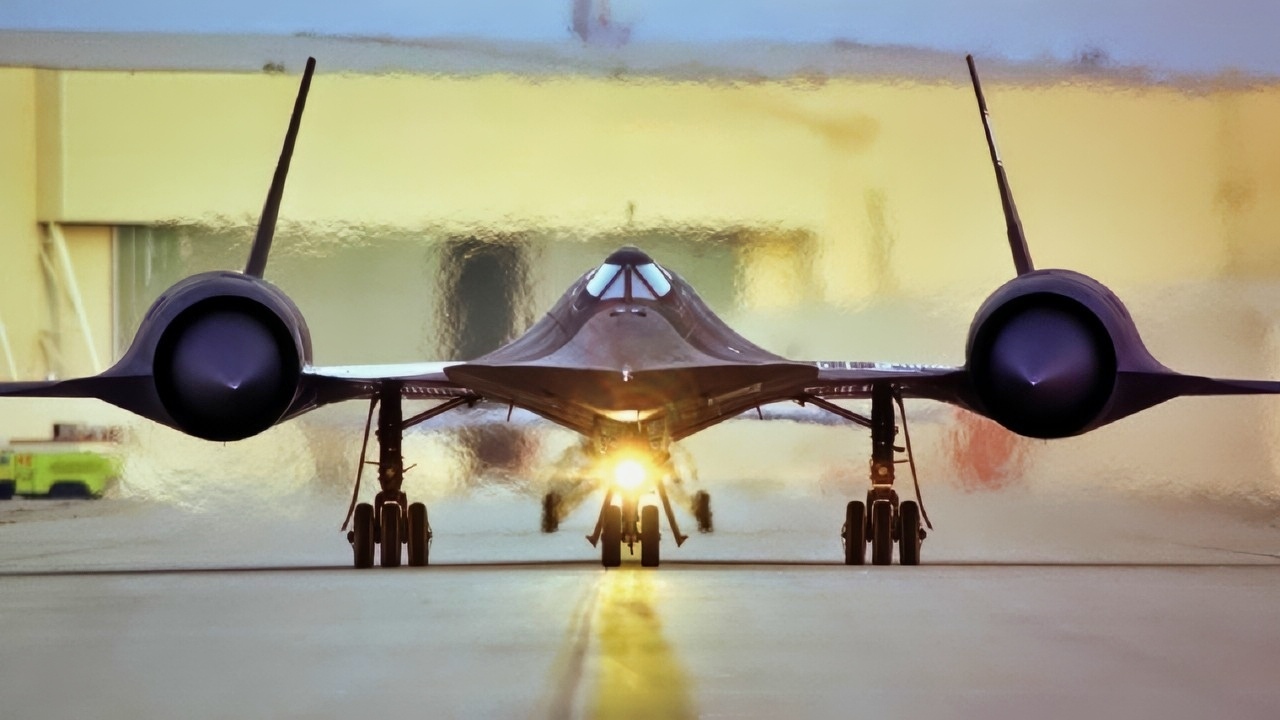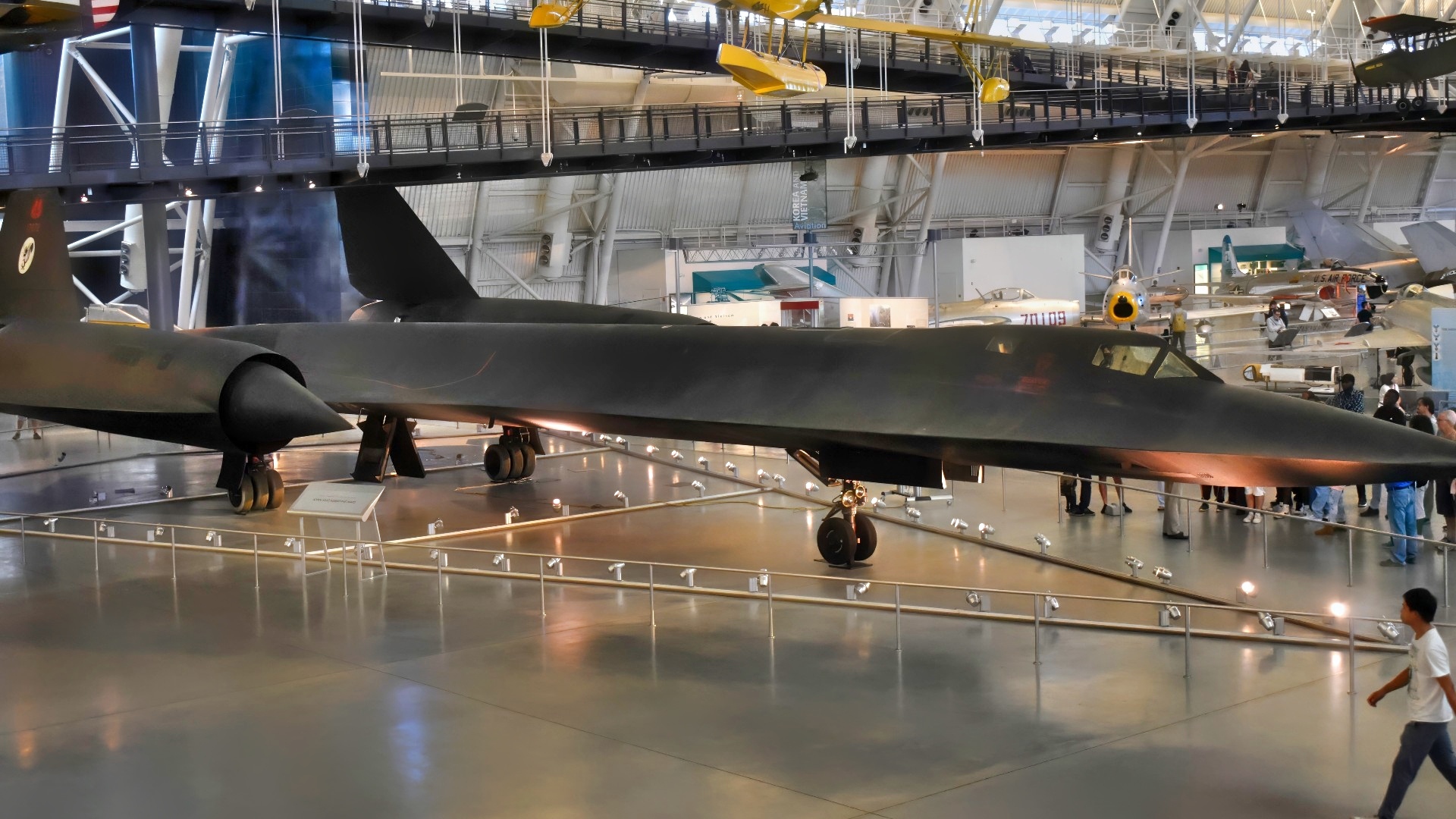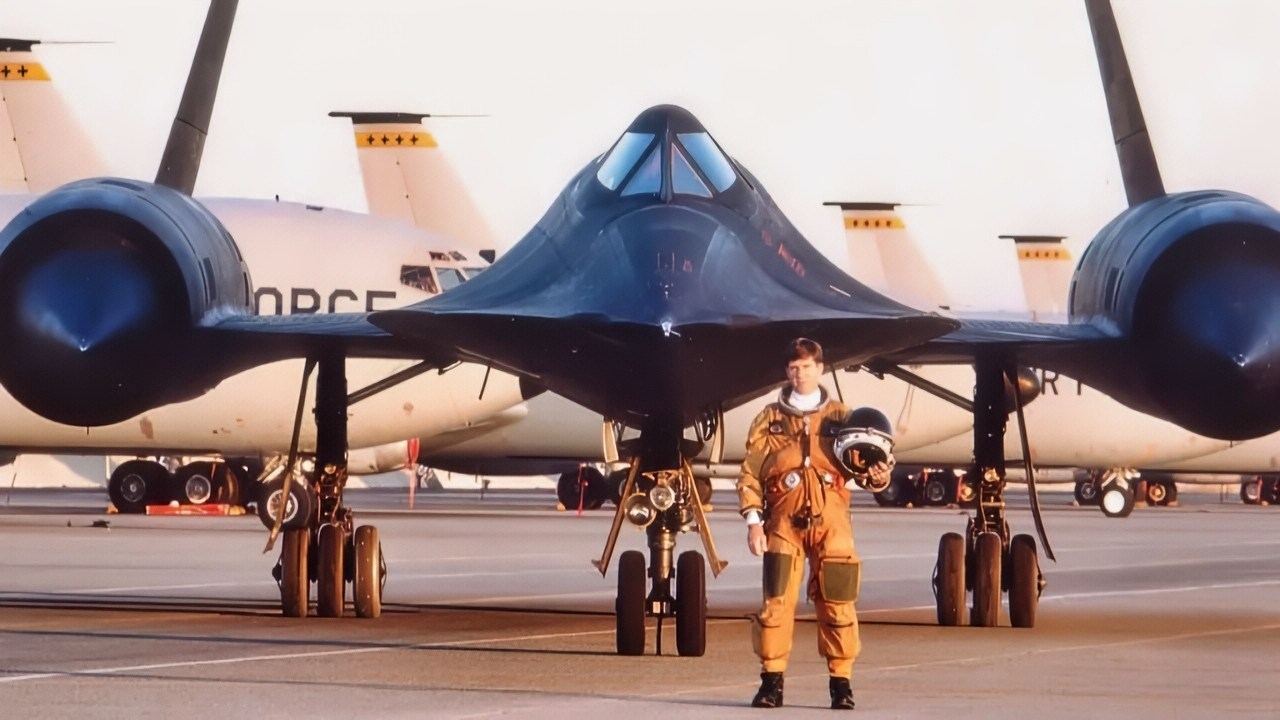Key Points and Summary – The SR-71 Blackbird, the world’s fastest air-breathing manned aircraft, held its speed record not because of its airframe’s limits, but due to a crucial safety restriction on its J58 engines.
-The aircraft’s top speed was officially limited by the compressor inlet temperature, which was not to exceed 427°C (800°F).

SR-71. Image Credit: Creative Commons.
-While colder outside air sometimes allowed pilots to push past the official Mach 3.3 record, they were ultimately constrained by the risk of a catastrophic “unstart” at higher speeds.
-This could cause the aircraft to go out of control and “come apart,” a risk too great to take.
–National Security Journal has visited several SR-71 platforms over the year and even talked to a real Blackbird pilot. We present images from one recent visit in this article.
The Real Reason the SR-71 Blackbird Couldn’t Fly Faster Than Mach 3.3
The SR-71 spy plane, known as the Blackbird, had its first flight in 1964, before it entered service two years later, and had its first operational sortie in 1968. The Blackbird went on to be retired in 1990, with NASA flew them throughout the ‘90s, until the final flight in 1999 and its retirement.
According to the website of the National Museum of the United States Air Force, the Blackbird was a “long-range, advanced, strategic reconnaissance aircraft developed from the Lockheed A-12 and YF-12A aircraft.”
During its time in service, the Blackbird “remained the world’s fastest and highest-flying operational aircraft,” and it was famously never shot down.
Inside the SR-71 Blackbird
Simply Flying, earlier this year, wrote about how the SR-71 Blackbird worked.
“The aircraft was designed as a spy plane able to outfly any threats from missiles, enabling it to soar over areas of interest and gather information with impunity,” the article said. “Only 32 were ever built, with the first entering service in 1966. They served for the remainder of the Cold War, being temporarily retired in 1989 and permanently retired in 1998.”
The SR-71 could fly as high as 80,000 feet, while most fighter jets never go above 50,000 feet.

SR-71 Blackbird On Runway. Image Credit: Creative Commons.

SR-71 and SR-71 Nose Section Original Photo from NSJ.
“To fly in such thin air, SR-71 pilots had to don a pressure suit, namely the S901J Full Pressure Suit from 1962,” Simple Flying wrote about the suit. “This suit was used on the A-12, YF-12A, and SR-71 and came with a parachute harness, an automatic flotation system, a urine collection device, a breathing system, a thermal protective garment, and more. The suit was an evolution from the original David Clark XMC-2-DC suit first produced in 1956.”
The site also wrote about how the cockpit worked, with two pilots required to fly it, while using “zero-zero” ejection seats.
“The cockpit gave the pilots enough room to make movements towards the various controls, although, not only were the pilots encumbered by their pressure suits, but they also wore gloves,” the story said. “As such, some controls were designed oversized to be easier for their gloved hands to operate.”
They also couldn’t see much from the cockpit.
“he SR-71 was not designed for sightseeing, and the views for the pilot sitting in the cockpit were restricted thanks to the small canopy windows as well as limitations from the helmet worn,” Simple Flying wrote.
How Fast Could It Go?
According to the Flight Test Historical Foundation, the SR-71 “reportedly reached a top speed of Mach 3.4 during flight testing, with its most efficient cruise speed being Mach 3.2.” That speed record was set by the Blackbird in July of 1976.
The Smithsonian’s Air and Space Museum’s website laid out the records that were broken that day.

SR-71 Blackbird Smithsonian. Image Credit: National Security Journal.
“In 1976, the Lockheed SR-71 Blackbird broke the world’s record for sustained altitude in horizontal flight at 25,929 meters (85,069 feet),” the site said. “The same day, another SR-71 set an absolute speed record of 3,529.6 kilometers per hour (2,193.2 miles per hour), approximately Mach 3.3.”
Per the Museum of Flight, that speed record for an air-breathing production aircraft stood until 2004, by NASA’s unpiloted X-43A, although the record still stands for piloted aircraft.
Why couldn’t it go even faster than that? A pilot recently explained why.
Limiting Speed
According to a recent Aviation Geek Club story, the SR-71 Blackbird’s top speed was limited by its J58 engine temperature.
“Right in front of the engine compressor was a temperature probe that reported the temperature to the pilot; when the temperature was around 427C, 800 degrees Fahrenheit, that’s as fast as they were allowed to go,” the story said. But it added, however, that “a cold blast from frigid weather could make a difference in reducing the temperature,” making it possible for the aircraft to go faster than that.
Former Blackbird pilot David Peters told Aviation Geek Club that the outside air temperature played a role in how fast the SR-71 was allowed to fly.
“The issue is that I have been limited to less than Mach 3 on a few occasions because the outside air temperature was quite above standard and 427C came up at about 2.95,” Peters told the publication. He added that he did once get the aircraft’s speed as high as 3.49.
“The actual limiting airspeed is around 3.55 that is where the spike being at full retraction loses the intercept on the shock wave and can no longer position it correctly in the inlet,” Peters told Aviation Geek Club.
Then there’s the question of warranties.
“‘I don’t know of any warranty that P&W had or any other parts manufacturer for that matter,” Mike Relja, who worked on the jets for more than 30 years, told the publication.
One Last Test Run
In 1990, near the end of the Blackbird’s life, per Aviation Geek Club, two pilots asked Lockheed if they could, on a speech run, fly the max limit of Mach 3.3.
“Lockheed said no if the aircraft had an unstart above 3.3 it may go out of control and come apart hard to keep the pointy end forward. Also, no fuel flow limits established above 3.3 M were ever tested,” Aviation Geek Club said.
“The SR-71 crewmembers were too responsible to risk and exceeded the temperature limit. They wanted to keep the warranty on the engines, the J58’s,” the report said.
The Final Flight of the Blackbird
The SR-71 Blackbird made its last flight from Edwards Air Force Base on October 9, 1999, which Vintage Aviation News wrote about on the anniversary earlier this month. The last flight was an air show at Edwards Air Force Base. The Blackbird was supposed to fly both days of the show, but a fuel leak grounded it, making the Saturday flight the celebrated jet’s final one.
NASA Research Pilot Rogers Smith and Flight Test Engineer Robert Meyer Jr. piloted that last flight, which was also the last SR-71 to be built. The jet is now on display at the Neil A. Armstrong Flight Research Center, also at Edwards.
About the Author: Stephen Silver
Stephen Silver is an award-winning journalist, essayist, and film critic, and contributor to the Philadelphia Inquirer, the Jewish Telegraphic Agency, Broad Street Review, and Splice Today. The co-founder of the Philadelphia Film Critics Circle, Stephen lives in suburban Philadelphia with his wife and two sons. For over a decade, Stephen has authored thousands of articles that focus on politics, national security, technology, and the economy. Follow him on X (formerly Twitter) at @StephenSilver, and subscribe to his Substack newsletter.
More Military
Russia’s ‘Black Hole’ Kilo-Class Submarine Has a Message for the U.S. Navy
How a Russian Pilot Defected With A Mach 2 MiG-29 Fulcrum Fighter
The F-4 Phantom II Has a Message for Any Air Force on Earth
The F-16 Fighting Falcon Fighter Has a Message For Any Air Force on Earth










